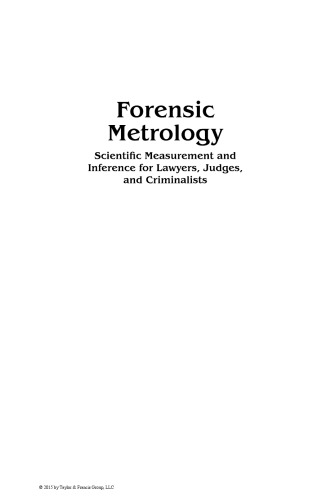

Most ebook files are in PDF format, so you can easily read them using various software such as Foxit Reader or directly on the Google Chrome browser.
Some ebook files are released by publishers in other formats such as .awz, .mobi, .epub, .fb2, etc. You may need to install specific software to read these formats on mobile/PC, such as Calibre.
Please read the tutorial at this link: https://ebookbell.com/faq
We offer FREE conversion to the popular formats you request; however, this may take some time. Therefore, right after payment, please email us, and we will try to provide the service as quickly as possible.
For some exceptional file formats or broken links (if any), please refrain from opening any disputes. Instead, email us first, and we will try to assist within a maximum of 6 hours.
EbookBell Team

4.1
80 reviews''Foreword Facts are inherently nonexplanatory. A report of ''70 degrees'' means nothing without some context: Is it January or July? Juneau or Jakarta? Celsius or Fahrenheit? Shewhart's dictum (''Data has no meaning apart from its context'') is central to all sciences, including--perhaps particularly--forensic science. A few assumptions underly this concept. First is that the context trumps the data in that, as Deming said, ''Experience without theory teaches nothing. In fact, experience can not even be recorded unless there is some theory, however crude. . . '' (Deming, 1986, p. 317). If you must be ''this tall'' to ride this roller coaster, then in the context (the roller coaster's safety design), height (the measurement) is important because it is ultimately based on theory (human biological height is predictably proportional to age and weight): Children of a certain age are large enough to be protected by the coaster's safety mechanisms, which were designed with bodies of a minimal size in mind. Simply saying a child is 40 inches tall means very little. The second assumption is that there are data, that is, plural. Science is based on reproducibility and with that comes the collection of multiple data points, either by ourselves to ensure accuracy or by others to check validity. In each measurement is a minor bit of error (in the statistical sense) and multiple measurements help us capture, understand, and control that error. Twenty one different Six Flags Amusement Parks exist and each one has different roller coasters, ranging from children's coasters to Mega Coasters, all with different height requirements (Table 0.1). Multiple measurements are taken, recorded, and communicated to each of Six Flags' parks to ensure that the requirements are consistent between parks''--